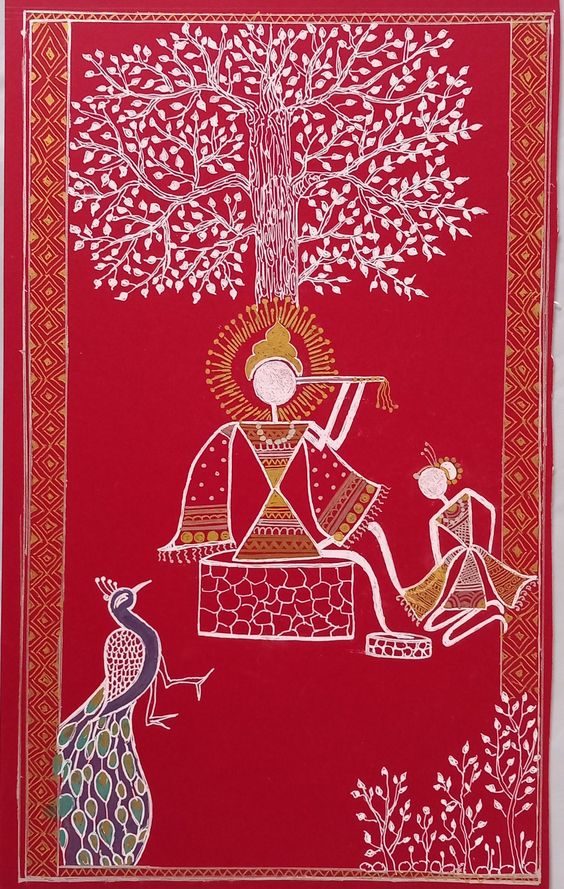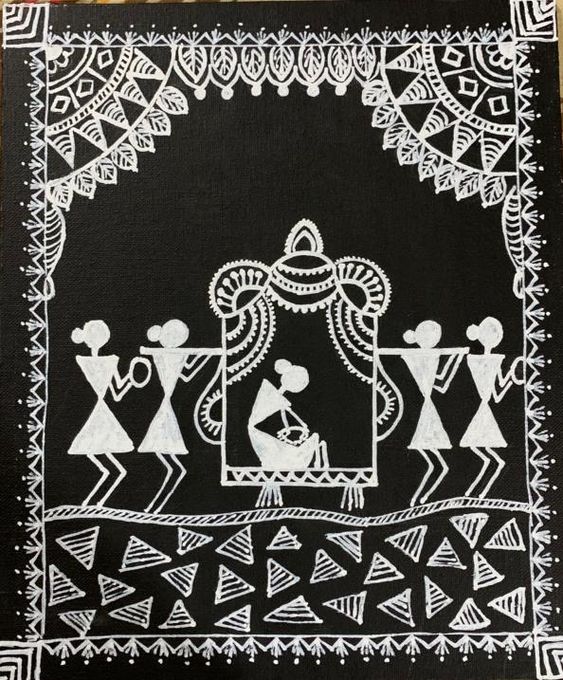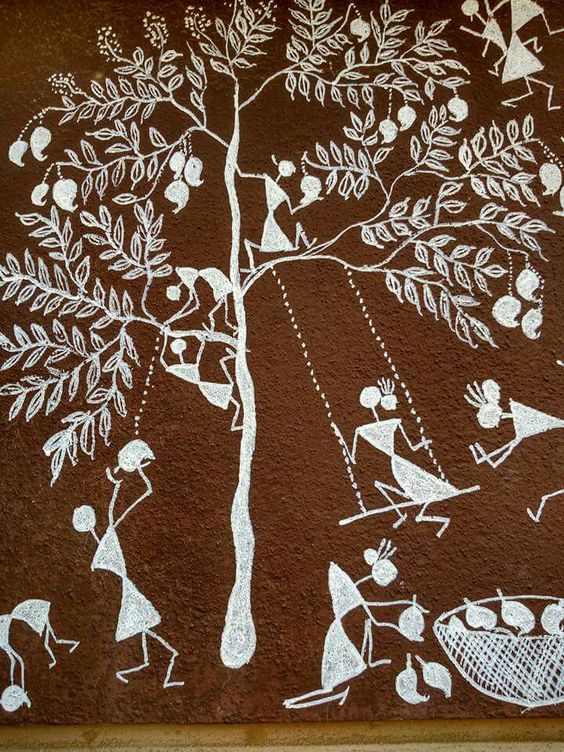Warli art, originating from the indigenous Warli tribe of Maharashtra, India, is more than just a form of expression; it is a storytelling tradition that dates back to 2500 BC. These unique paintings, often created with white pigment on austere mud walls, narrate the life and beliefs of the Warli people. Depicting scenes of daily life, rituals, and nature, Warli art captures the simplicity and harmony of tribal life.

The art form is characterized by its use of geometric shapes: circles representing the sun and moon, triangles symbolizing mountains and trees, and squares depicting sacred enclosures or pieces of land. Human and animal figures are central, portraying activities like hunting, dancing, sowing, and harvesting, thus weaving a visual narrative of communal living.

What sets Warli art apart is its communal nature. It is often created collectively, especially during festivals and weddings, fostering a sense of unity and shared heritage. Each painting is a tapestry of stories, capturing the tribe’s respect for nature and the rhythm of rural life.

Warli art is not just visually striking but also serves as a cultural chronicle, preserving the myths, traditions, and history of the Warli people for generations to come.


Leave a Reply